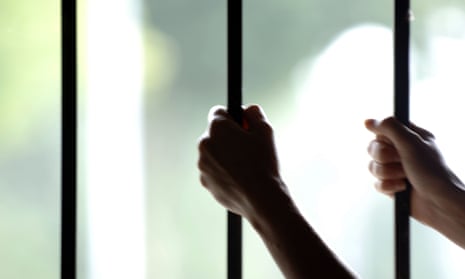“You can’t work in the justice system and not know just by looking that there are racial disparities in the system,” said Baz Dreisinger, the creator of the Prison-to-College Pipeline program which prepares New York inmates in state prison for higher education.
“Every year we maybe have one white student in our class,” Dreisinger said. “Obviously race is not remotely an admissions factor for us, but it’s just the reality of what it is.”
A report published on Tuesday sought to put data behind that reality by analyzing race within state prisons and comparing those findings to the US census.
Black Americans were incarcerated in state prisons at an average rate of 5.1 times that of white Americans, the report said, and in some states that rate was 10 times or more. The US is 63.7% non-Hispanic white, 12.2% black, 8.7% Hispanic white and 0.4% Hispanic black, according to the most recent census.
The research was conducted by Ashley Nellis, a senior research analyst with the Sentencing Project, a Washington, DC-based nonprofit that promotes reforms in criminal justice policy and advocates for alternatives to incarceration.
Nellis found that in five states, the disparity rate was more than double the average. New Jersey had the highest, with a ratio of 12.2 black people to one white person in its prison system, followed by Wisconsin, Iowa, Minnesota and Vermont.
Overall, Oklahoma had the highest rate of black people incarcerated with 2,625 black inmates people per 100,000 residents. Oklahoma is 7.7% black.
Among black men in 11 states, at least 1 in 20 were in a state prison.
Hawaii, which is 2.5% black, had the lowest incarceration rate among black people (585 per 100,000), and the lowest ratio – 2.4 black Americans to 1 white – in its prisons.
For Hispanics, there was also a disparity compared to white prison populations. The average ratio for all states was 1.4 to 1.
Nellis said these numbers were more difficult to crunch because of variations in reporting race and ethnicity and the fact that four states report no data on them. Because of this, she said, prison population data on Hispanics or Latinos was likely to be an underestimate.
“It seems very unlikely that in a state like Florida that has a large percentage of Hispanics that only 4% of the prison population would be Hispanic,” Nellis said.
For Dreisinger, the findings were not surprising. But she said she saw the data as “ammunition” for backing up reform efforts and identifying problems.
In her publication, Nellis wrote that the reasons for the racial disparity were problems in policy, implicit biases and structural disadvantages.
Criminal justice reform, especially relative to race, has been a key issue for Barack Obama, particularly in the past year. Last July, in a speech to the NAACP, Obama acknowledged those structural disadvantages, calling America’s criminal justice system “skewed by race and wealth”. He banned juvenile solitary confinement in federal prisons and urged state prisons to do the same. According to a recent White House press release, Obama has commuted the sentences of 348 individuals, on top of the 6,000 released last October by the justice department.
In the Senate, a revised bipartisan criminal justice bill aiming to reduce mandatory minimum sentences was introduced in April.
The research focused on state prisons only, because “the majority of people in prison are sentenced at the state level rather than the federal level,” as Nellis wrote in her report. According to the Bureau of Justice Statistics, the state prison population in 2014 was 1,350,958, while the federal was 210,567.
Dreisinger said she was beginning to see reform across the country and in New York state, thanks to things like newfound access inmates have to federal Pell Grants for college.
But Dreisinger admitted there was only so much that federal action can do.
“The states are where the issue lies,” she said.

Comments (…)
Sign in or create your Guardian account to join the discussion